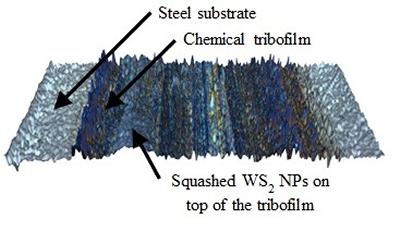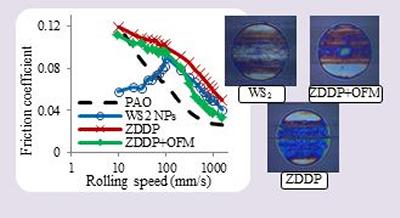Research project: WS2 as lubricant nanoadditives
Tungsten disulphide (WS2) nanoparticles have excellent tribological properties and are a potential replacement for current problematic additives.
Tungsten disulphide (WS2) nanoparticles have excellent tribological properties and are a potential replacement for current problematic additives.

WS2 nanoparticles possess remarkable tribological and physicochemical properties which recommend them as potential candidates for replacing problematic additives still in use in lubricants. This project has shown that the mechanism of action of WS2 NPs in high-temperature, high-pressure contacts is based on the generation of a thick chemical tribofilm on the steel wear tracks (200 nm). The specific properties of the WS2 tribofilms are responsible for reduced friction and wear during tribological tests.

The friction, wear and micromechanical properties of WS2 tribofilms are compared with those of tribofilms formed by the zinc dialkyldithiophosphate (ZDDP) antiwear additive and ZDDP-organic friction modifier (OFM) mixture. Nanoindentation measurements showed that WS2 generates tribofilms with higher values of hardness and Young's modulus than ZDDP and ZDDP+OFM, which explains its excellent antiwear properties. The friction performance of WS2 surpassed that of ZDDP+OFM. The striking reduction of boundary friction is credited to the layered structure of the WS2 tribofilm, with exfoliated/squashed WS2 nanoparticles that fill the gaps and cover the reacted tribofilm.
Materials and surface engineering